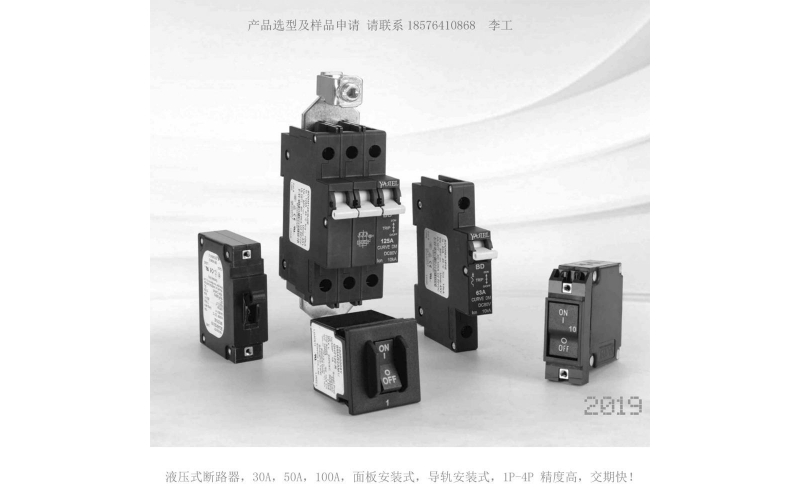How does a circuit breaker work?
Circuit breaker, also known as air switch or leakage switch. There are two types of circuit breakers (actually four types), one is overcurrent release (also known as delay release), which is composed of a bimetallic mechanism and used for overload protection. One type is an instantaneous release device, composed of an electromagnetic mechanism, used for short-circuit instantaneous protection. The instantaneous release characteristics are divided into two types: C and D. Assuming the rated current of the circuit breaker is In, the setting current of type C is 5-10In, and the setting current of type D is 10-14In. For electrical equipment with low starting current, such as household appliances, choose type C; for electrical equipment with high starting current, such as heavy-duty motors, choose type D to avoid circuit breaker misoperation during starting. D-type switches can avoid short-term surge currents and are generally used for motor power switches. C-type switches are generally used to control power supplies and switches for non surge current loads.

(Recommended products:液压电磁式断路器)
For miniature circuit breakers, there are actually four types of magnetic trip curves, namely A, B, C, and D. Type A trip curve: magnetic trip current is (2-3) In, suitable for protecting semiconductor electronic circuits, measurement circuits with low-power power transformers, or systems with long and low currents. Type B trip curve: magnetic trip current is (3-5) In, suitable for protecting residential distribution systems, household appliances, and personal safety. Type C trip curve: magnetic trip current is (5-10) In, suitable for protecting distribution lines and lighting lines with high connection currents. Type D trip curve: magnetic trip current is (10-20) In is suitable for protecting equipment with high surge currents, such as transformers, solenoid valves, etc.
58彩票When there is no leakage current or the leakage current cannot reach the operating current, the zero sequence current induced voltage is insufficient to trigger the thyristor G pole (control pole). At this time, the A pole (anode) and K pole (cathode) are equivalent to a large resistance of 1M (1M=1000000 ohms) or more. The release coil is generally several tens of ohms (about 30-60 ohms), and the release coil and thyristor are equivalent to a series connection state. Due to the fact that the equivalent resistance of the thyristor is much greater than the resistance value of the release coil, almost all voltage is applied to the A and K terminals of the thyristor, and the release has no voltage drop. Even a small voltage cannot drive the release to work, so the protector is in a standby state and the circuit breaker is in a normally closed state. When the voltage induced by the zero sequence current transformer can trigger the thyristor G pole, both ends A and K are completely conductive, and the resistance is almost zero. The entire voltage drop is applied to both ends of the trip coil, and the trip coil generates sufficient suction force to drive the trip mechanism to operate, thereby cutting off the power supply and achieving self-protection.
that断路器58彩票How does it work? What is the working principle?
58彩票The interior of a circuit breaker is generally composed of a contact system, an arc extinguishing system, an operating mechanism, a release, a housing, etc. Its function is to cut off and connect the load circuit, as well as cut off the fault circuit, prevent the expansion of accidents, and ensure safe operation. Therefore, the working principle of the circuit breaker is as follows:
58彩票1. When there is a short circuit, the magnetic field generated by high current (usually 10 to 12 times) overcomes the reaction spring, and the release pulls the operating mechanism to act, causing the switch to trip instantly.
2. When overloaded, the current increases, the heat generation intensifies, and the bimetallic strip deforms to a certain extent, pushing the mechanism to operate and causing the switch to trip; The larger the current, the shorter the action time.
3. There are electronic types that use transformers to collect the current magnitude of each phase, compare it with the set value, and when the current is abnormal, the microprocessor sends a signal to drive the electronic release to operate the operating mechanism.
The above is the encyclopedia of circuit breakers and an introduction to their working principles. If you have any other insights on circuit breakers, you can discuss them with the customer service of Weikewei Technology.